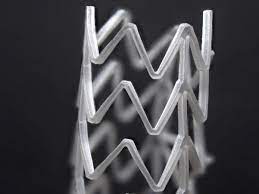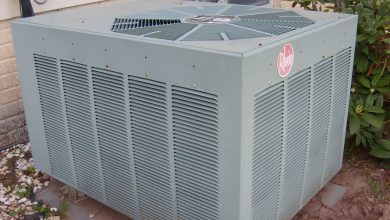What is the difference between femtosecond laser cutting and other laser processing?

Analyze and elaborate on principles
Here, the femtosecond laser we refer to refers to the laser with a pulse width of 1-1000 fs (1 fs=10-15s), and other lasers refers to the pulsed laser or continuous laser with a pulse width greater than 1000 fs (1 ps).
During the laser processing process, factors such as the wavelength, energy (or power), pulse width, spectrum, pulse frequency, polarization, phase, etc. of the laser need to be considered. At the same time, the focusing system, scanning speed and direction, and the composition and structure of the material to be processed must also be considered. and form, and even the environmental conditions such as temperature and atmosphere in which the substance is exposed.
Pulse width is one of the most important laser parameters with universal influence. Femtosecond laser also mainly refers to the near-infrared femtosecond laser with a wavelength near 1 μm, which is mainly titanium sapphire, Yb3+ doped crystal and fiber laser.
Femtosecond laser systems are expensive
Femtosecond lasers are now being used in cutting, drilling, welding, marking, stripping, precision etching,repair and other processing fields. However, there are currently few practical applications because femtosecond laser is much more expensive than long pulse laser and continuous laser.
The main reasons why femtosecond laser is expensive are:
- According to the Fourier change relationship, a gain medium with a wide spectrum is required to generate ultrashort femtosecond pulses. The bandwidth of the gain medium determines the ultimately achievable pulse width.
- Femtosecond laser pulses generally require film locking technology, and the laser system is relatively complex.
Femtosecond laser has very good properties
Femtosecond processing has many advantages, the first of which is high precision.
Due to its short pulse width, femtosecond laser can obtain extremely high peak power (pulse energy/pulse width) with low pulse energy. When the material is further focused with an objective lens, etc., due to the high energy density near the focus, it can Cause various strong nonlinear effects.
Laser processing can be considered as a laser-induced reaction, which in principle is divided into induced molecular vibration and electronic excitation. The former is a thermal reaction, and the latter interacts with chemical bonds associated with electrons in the outer shells of atoms that make up matter. Near-infrared femtosecond laser processing achieves spatially selective microstructure manipulation through a multi-photon process without affecting the surface structure. This is another advantage of femtosecond laser processing.
Generally, under laser irradiation, the time for electrons to absorb photons to be excited is in the fs range (during the pulse action), and then electron-phonon coupling occurs. The energy is transferred to the crystal lattice and the time for the crystal lattice to reach thermal equilibrium is within a few seconds. to the order of tens of ps. The time scale of thermal diffusion and material melting varies with different materials, and is basically on the order of tens to hundreds of ps. The time for ablation to form on the material surface ranges from a few hundred ps to ns.
Under the action of nanosecond and picosecond lasers, the laser energy deposited in the electron gas is transmitted to the crystal lattice within the time when the laser pulse irradiates the material, causing heating, melting and even ablation of the material. The thermal effect plays an obvious role in the process. Precisely due to the high precision and “cold processing” characteristics of femtosecond laser, it can be widely used in industrial fields such as microelectronics and aerospace, as well as in medical treatment, such as myopia correction, brain surgery, etc.
Effects of laser drilling with different pulse widths on 100 μm thick stainless steel sheets
When the femtosecond laser acts on metal, since the pulse width of the femtosecond laser is smaller than the time scale of electron-phonon interaction, the laser energy absorbed by the electrons ends before it can be transferred to the ions. Therefore, the temperature of electrons is very high while the temperature of ions is still very low. Femtosecond laser ablation of metal is a non-equilibrium ablation. The two-temperature model and the improved two-temperature model show that the temperature change of the lattice is related to the lattice heat conduction and electron-lattice coupling. Under the action of high-intensity (≥1014W/cm2) femtosecond laser, the ionization of the material is completed before the end of the pulse action time (~100 fs). At this time, the ablation mechanism of metal and dielectric is the same.
Femtosecond laser is cold processing, which is actually a misunderstanding
Femtosecond laser processing is also related to laser pulse frequency. When numerous femtosecond laser pulses are strung together into a quasi-continuous pulse array, that is, when the pulse frequency is very high, the residual heat of femtosecond laser processing will produce a heat accumulation effect. Controlling the repetition frequency is expected to achieve the preparation of three-dimensional structures that coexist with multi-photon absorption and thermal effects that are characteristic of femtosecond lasers and long-pulse or continuous lasers, further expanding the types of micro-nano structures and the functions of materials.
Femtosecond laser-induced heat-affected zone in tellurite glass samples
This is an optical photograph of the heat-affected zone induced by a 250 fs, 800 nm, 500 kHz femtosecond laser in a tellurite glass sample. The induced structure shows obvious thermal effect, and the structure increases significantly with irradiation time.
During the interaction between femtosecond laser,Laser Cutting Nitinol and material, the time scale of photon heating of electrons (<1ps) and electron-phonon coupling (ps) is much smaller than the time scale of thermal diffusion (>0.1ns), so the residual heat of laser processing will generate A hot spot. For low repetition frequency femtosecond lasers, due to the long interval between pulses, the temperature of the laser focus area has dropped to the ambient temperature by the time the next pulse reaches the material. For high repetition frequency femtosecond lasers, due to the short interval between pulses, when this time is shorter than the time required for the diffusion of the thermal field generated by laser irradiation, when the next pulse reaches the sample, the previous pulse is generated The thermal field has not completely dissipated, which will lead to the accumulation of heat. As the irradiation time prolongs and the number of laser pulses increases, the temperature of the laser focus area will gradually increase until it reaches dynamic equilibrium. Although the thermal field generated during high repetition rate femtosecond laser irradiation will increase the size of laser-induced micro-nano structures, it is also crucial to the formation of certain micro-nano structures.
Our company has created parts for over 500 companies and offered them the best Service.Be-Cu provides the highest standard of laser cutting service for all your needs. Contact us today to know more about what we offer!
Sales: Bella
Web:be-cu.com
Phone: +86 151 1280 7161
Email: info@be-cu.com
Affiliated: Be-cu Prototype
Address: Dongguan,China




